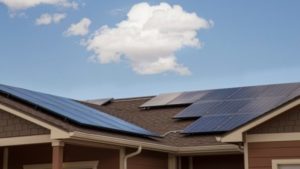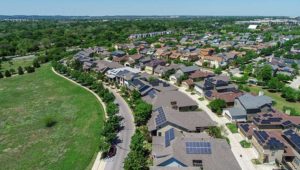
There’s 1.5 million Australian households with solar PV on their roof, but how many actually understand what’s their, what it’s doing, and if it’s working. And how many understand the best way to get value from their investment.
Not as many as there should be. In fact, maybe nearly half don’t understand how their solar works and how to get value out of the technology.
It is assumed that as more than 200,000 solar households come off the premium solar feed-in tariffs at the end of the year that there will be a surge in battery storage uptake as they seek to continue getting value from their renewable energy investment.
Why? Because, for those households that have been getting as much as 60c/kWh for the excess solar they send to the grid, the current norm of around 5c/kWh will seem entirely unacceptable, so maximising self-consumption will become key.
But what about those rooftop solar customers that never had those generous FiTs? How do they make the most of their solar investment? As it turns out, this is a question online electricity retailer Powershop ventured to ask rooftop solar owners, in an effort to discover what they actually think. And the response – illustrated in the chart below – is a bit of a worry.

More than half of respondents – all solar households but not necessarily Powerhsop customers – said they tried to maximise self consumption, be it by consuming most of their solar energy while the sun was shining or by storing excess for use when it was not.
However, a huge 44 per cent of those surveyed said they looked for value by maximising the amount of solar they sent to the grid.
“How is that possible?” asked Powershop Australia CEO Ed McManus, in his presentation to the Disruption and the Energy Industry conference, co-hosted by RenewEconomy in Sydney on Wednesday. “What sort of conversation is happening between them and the solar installer that they think that?”
And it’s a fair question. As we have reported here on many occasions, for the vast majority of solar households there is very little value in sending your excess generation to the grid, when in most states and territories you are paid around 5-6c/kWh for it, and pay around 23c/kWh to get electricity from the grid.
For McManus, whose company prides itself on its customer engagement and operational transparency, the result of the poll – which suggests nearly half of Australian households with rooftop solar have installed it without understanding how to use it in an efficient way and get the most value from it – is symptomatic of a broader problem for Australia’s energy industry, whose reputation sits somewhere near banking in terms of trust.
“It’s a very tricky situation we need to have top of mind as this (renewable energy) transition happens,” McManus told the conference. “The internet will continue to push the world’s information to the edge of humanity. What does that mean? If you’ve got bad stuff in your business models, get it out now. This stuff will rise to the surface.
“We are trying to create a business that doesn’t have ripping off customers a part of its core business model… We think this is about incremental steps, incremental positive movements for the benefit of the consumer… Where whatever comes, we will respond very quickly.”
This article was originally published on RE sister site One Step Off The Grid. To sign up for the weekly newsletter, click here.










